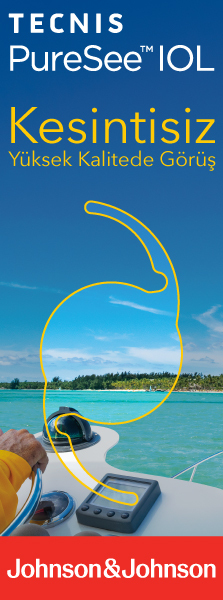2M.D. Associate Professor, Istanbul Medipol University, Medical Faculty, Department of Ophthalmology, Istanbul/TURKEY
3M.D., Adana Military Hospital, Eye Clinic, Adana/TURKEY
4M.D. Associate Professor, GATA Military Hospital, Department of Ophthalmology, Istanbul/TURKEY
5M.D., Professor, Yakın Dogu University Facöulty of Medicine, Department of Ophthalmology, Lefkosa/KKTC
6M.D. Professor, GATA Military Hospital, Department of Ophthalmology, Istanbul/TURKEY
7M.D. Professor, GATA Military Hospital, Department of Pathology, Istanbul/TURKEY Purpose: This study has been conducted to evaluate the effect of bevacizumab which is a vascular endothelial growth factor inhibitor on wound healing after trabeculectomy surgery in the rabbit eye.
Materials and Methods: We used 20 rabbits in our research. We allocated rabbits randomly to two groups (10 per group). We applied trabeculectomy to the right eyes of all rabbits. We injected bevacizumab subconjonctivally in one group and balanced saline solution in the other. We examined the rabbits on postoperative days 1, 3, 5, 10, 15 and 30. In these postoperative examinations; intraocular pressure values, bleb vascularity and bleb formation were evaluated. At the end of the study, we applied enucleation on all operated eyes. In each group the histological studies were performed to evaluate the rate of fibrosis and inflammation.
Results: The bleb survival in the bevacizumab group was significantly longer than control group (p<0.05). IOP values and bleb vascularity were significantly lower in bevacizumab group on postoperative day 15 (p<0.05). Histological analysis revealed that there was less postoperative fibrosis and inflammation in the bevacizumab treated eyes (p<0.05).
Conclusion: We consider that postoperative subconjonctival bevacizumab injection may be a useful treatment choice to improve success and to limit scar tissue formation in glaucoma filtration surgery.
Keywords : Glaucoma, bevacizumab, trabeculectomy, wound healing




